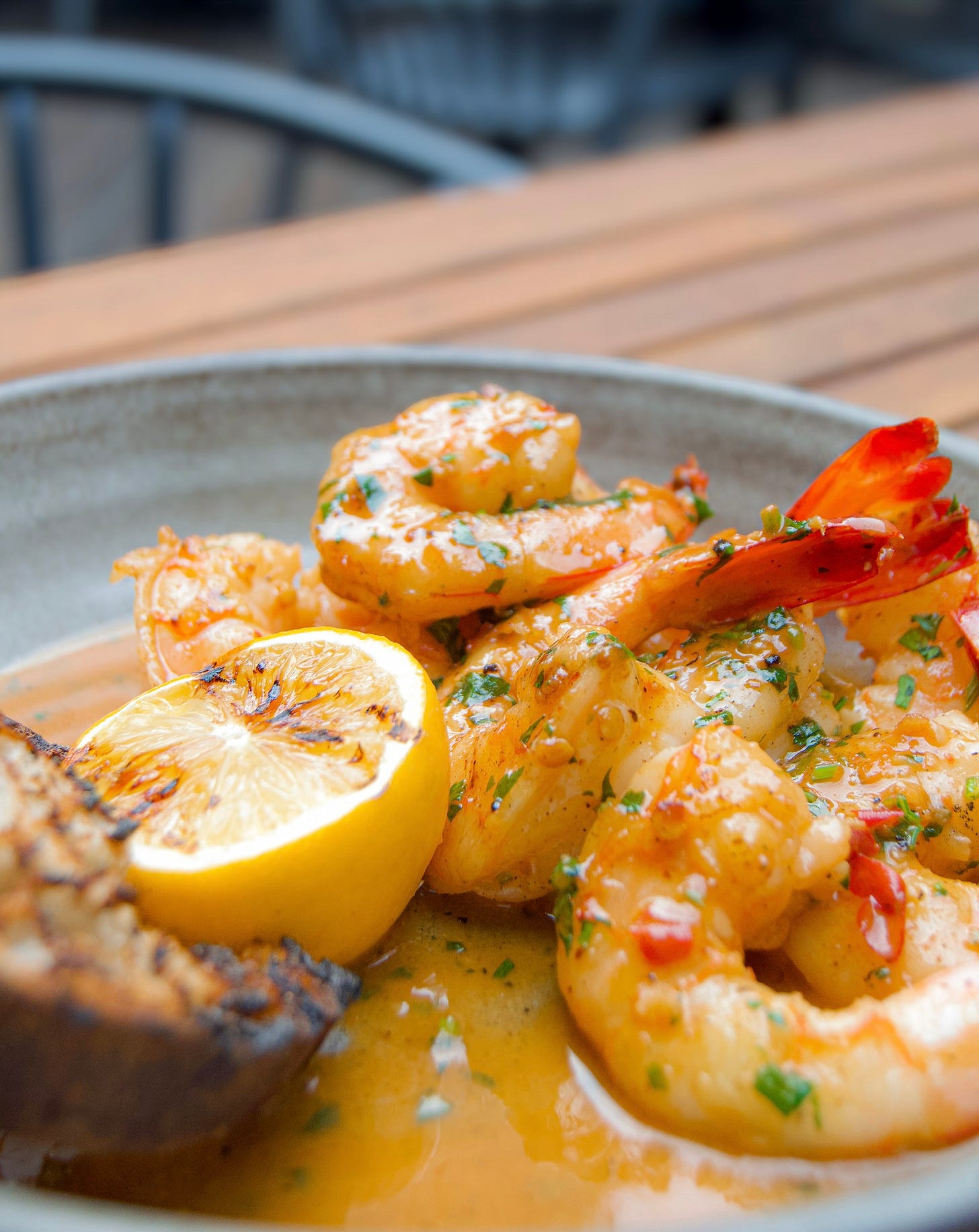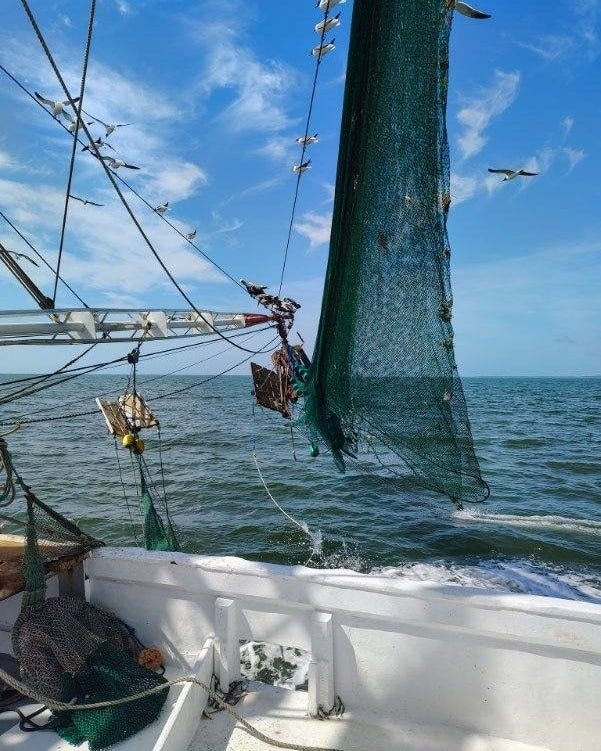Eat Only U.S. Wild Caught
Foreign shrimp continue the threaten the generational livelihoods of our shrimp fishing communities.
A beautiful scene from Capt. Cameron Reaves from the Palmetto Pride in the Atlantic taking samples of Roe Shrimp this week. SCDNR crustacean director is on board, checking the development of roe and how the spawning is progressing.
Trips like this one with our resource management officials are key to determining the opening of the Shrimp Season in South Carolina.
Roe shrimp in South Carolina refers to the large, white shrimp that are spawning now in the spring. They are the first shrimp of the season. Shrimp season will start in late May.
The South Carolina Department of Natural Resources was out yesterday in the waters off the coast of Village Creek, St. Helena Island, with Capt. Cameron Reaves. They are checking to see if there are enough eggs spawned to ensure a good harvest later in the year, specifically in the fall.
What is shrimp roe, and what to do with it?
Wild shrimp sometimes come with roe attached to the bellies of female shrimp. The roe looks like small, translucent pearls in shades of yellow, orange, and amber. Not all wild shrimp will have roe attached to the belly. Typically, you can expect to only find roes attached to female shrimp that are harvested during spawning season.
Is shrimp roe safe to eat? Information is knowledge.
Unlike the roe from fish or sea urchins, shrimp roe has a mild, briny flavor and a slightly crunchy texture when cooked. They are perfectly safe to eat and chock-full of nutritional goodness in the form of vitamin B12, minerals, essential fatty acids, amino acids, and carotenoids. Although some shrimp lovers choose to discard them, others swear shrimp eggs rank among the tastiest bounties of the sea.
Why eat only wild-caught? Know where your shrimp comes from.
Avoid foreign shrimp because many can be contaminated with environmental toxins. Shrimp dumping into the US is what officials are calling it. They say it’s driving down the cost of our wild shrimp and endangering the livelihoods of our generational fishing families.
Dangers of imported shrimp.
Shrimp farms are run under very poor conditions overseas. Shrimp farmers overstock their ponds, and the water is quickly polluted with waste, which can infect the shrimp with disease and parasites. To combat the problem, foreign shrimpers use large quantities of antibiotics, disinfectants, and pesticides that are illegal for use in the US.
The US Food and Drug Administration only inspects a minuscule percentage of seafood that’s imported into the US. This means we are buying and eating farm-raised fish that contain antibiotic-resistant bacteria, antibiotics, and pesticide residues.
The sad news is that 90 percent of the shrimp we eat is imported, and we have no way of knowing where the shrimp was produced, and nearly 50 percent of the shrimp found in grocery stores have no label.
Shrimp from Overseas Is Linked to Unethical Labor Practices
An Associated Press investigation uncovered a slavery network in Thailand dedicated to peeling shrimp sold around the world. The investigation found that shrimp peeled by modern-day slaves is reaching the U.S., Europe, and Asia. Hundreds of shrimp-peeling sheds are hidden in plain sight on residential streets or behind walls with no signs in a port town an hour outside of Bangkok.
The AP found that one factory was enslaving dozens of workers and runaway migrants in the sheds, which held 50–100 people, and many were locked inside. U.S. Customs records show that the shrimp made its way into the supply chains of major U.S. food stores, retailers, and restaurants. AP reporters went to supermarkets in all 50 states and found shrimp products from supply chains tainted with forced labor.
https://draxe.com/nutrition/shrimp-nutrition/
Good News for Shrimpers
Good news for the shrimpers and the overall seafood industry as President Donald Trump recently passed an executive order to restore American seafood competitiveness as it confronts the issues the domestic industry has been wanting addressed for decades.




